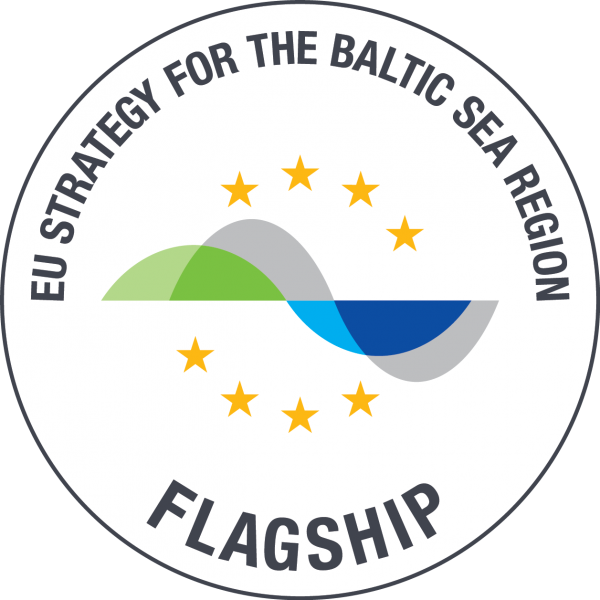Over the years, large amounts of historical photographs have been digitalized. But one important question remains: How can this unique material get more accessible to the public? The Cross Motion project has attempted answer this.
The Cross Motion project has facilitated increased cooperation between digital content makers and sectors such as health, education, and tourism. This kind of collaboration is often described as cross innovation, where knowledge in creative industries are combined with the needs of different sectors.
The overall objective has been to create new markets for the digital industry, while developing cost effective and societal beneficial solutions to these sectors.
The Cross Motion project is part of the Interreg Baltic Sea Program and includes partners from Norway, Sweden, Denmark, Germany, Lithuania, Latvia, and Estonia.
Paves way for AR technology in tourism
The Norwegian contribution has mainly focused on the intersection between digitalization, education, and tourism. Therefore, they have found innovative ways to use historical imagery in the tourism industry, and to make it more accessible with the help of AR technology (Augmented Reality). Unlike VR technology, that replaces a visual image by another, AR adds additional digital content on top of another image.
Gunnar Liestøl, Professor at the Department of Media and Communication, University of Oslo, has been leading the Norwegian contribution.
Gunnar Liestøl has been leading the Norwegian contribution in the Cross Motion project. Photo: University of Oslo
– There is a great and unused potential for AR technology. You are able to see other versions than the ones you can see with your naked eye This can be done in three ways: By showing something hidden, showing a future scenario – such as climate change, or by reconstructing the past, Liestøl explains.
“Reconstructing” an Estonian baroque town
Design, technology, and interactivity are important ingredients when developing an accessible and user friendly solution. Among other things, Cross Motion has developed and tested a photo app that can be used while exploring the Raekoja square, in the city of Narva in Estonia. The app combines mobile AR technology with elements from the gaming world.
The users have to play digital detectives to get the whole picture. In the background, you can see buildings from the Khrushchev era.
Narva is the third largest city in Estonia and has an old and rich history. For centuries, the city was torn between Swedish and Russian rule, and has always held status as an important trading center, connecting east with the west. After a major city fire in 1659, the swedes rebuilt the entire city within two decades. Due to the short building period, the city became one of the best examples on Nordic Baroque style. The old town of Narva appeared almost untouched until the last years of World War II. Then the town got heavily damaged by the Wehrmacht and the Soviet army.
Nowadays, only three original buildings remain in the old town, with the town hall as the most spectacular one. Today, the area is largely dominated by Soviet-style apartment block, built during the Khrushchev era.
Exploring history with app-technology
Although most of the old town is long gone, a rich photo that gives some impression of its glorious past, still exist. The Raekoja square was a popular scenery for taking photos in the interwar period. Cross Motion has taken advantage of this material for developing the app.
The Raekoja square reveals itself in its glorious past
While using the app, people can orient themselves around the Raekoja square. At first glance, the area does not look significantly different through the camera lens. But as you start moving, new buildings that does not exist anymore will appear. The app developers have managed to locate the exact positions where these photos were taken. When the users approach this spot, the buildings become more and more visible – at first, blurry and colorless, but clearer when you get closer.
When all the positions have been found, the old Raekoja square reveals itself in colors, as it once was some 80-90 years ago. You will also see animations of people, old cars, horses, and carts among other things that defined the street scene in the interwar period. In addition, you can walk over to information posts and read more about historical events, watch photos, explore architecture and more.
Playing “puzzles” and “seek games”
Analog game concepts have been a major inspiration for developing the app. Users get to play digital detectives by putting puzzles together, just like a jigsaw puzzle game. You might also recognize the element of “hide and seek”.
– The uniqueness about this app, is the way that users are actively engaged in the storytelling. We wanted to create an interactive app with assignments to be solved. This requires more from the individual. In a fun way, you have to put together piece by piece in order to get the whole picture, and there is a final reward at the end – the Raekoja square in its former glory, Liestøl explains.
A flagship for innovation, digitalization, innovation, and culture
Cross Motion holds status as a flagship project in the EU Strategy for the Baltic Sea Region (EUSBSR). In the strategy, the EU member states around the Baltic Sea (Sweden, Denmark, Estonia, Finland, Latvia, Lithuania, Poland and Germany) work together to strengthen cooperation between countries bordering the Baltic Sea, in order to meet common challenges and to benefit from common opportunities facing the region.
The strategy also welcomes cooperation with EU neighboring countries (Norway, Russia, Iceland, and Belarus).
Technology and digitalization have the power to solve many major challenges in different sectors. In this way, Cross Motion has demonstrated innovative solutions in regard to health, education, and tourism, which is a key goal in the strategy.








